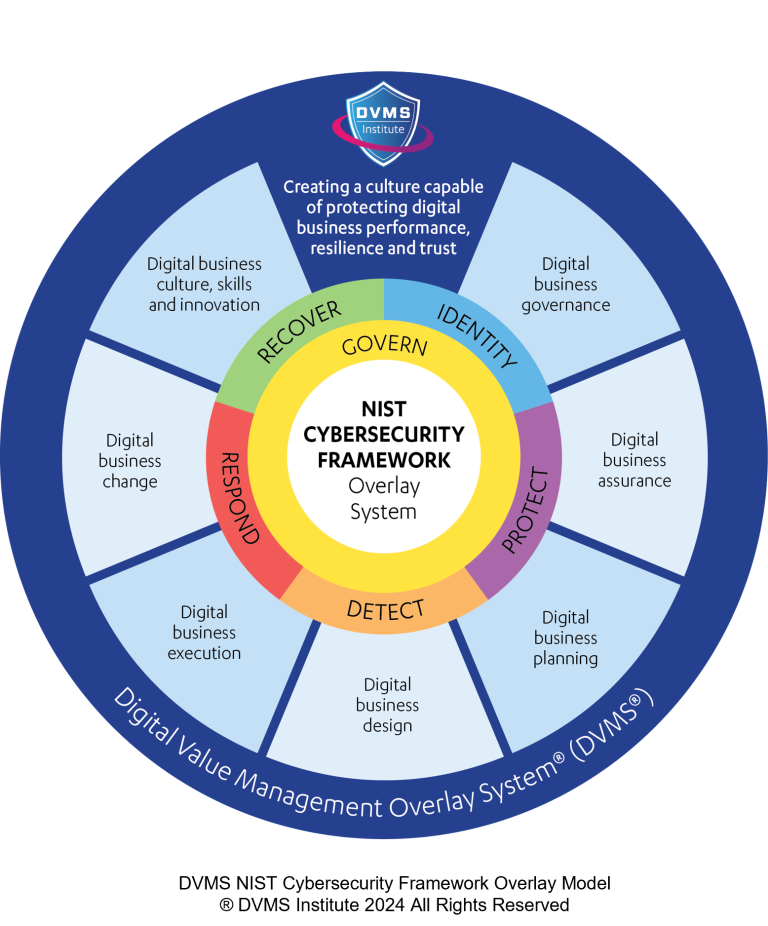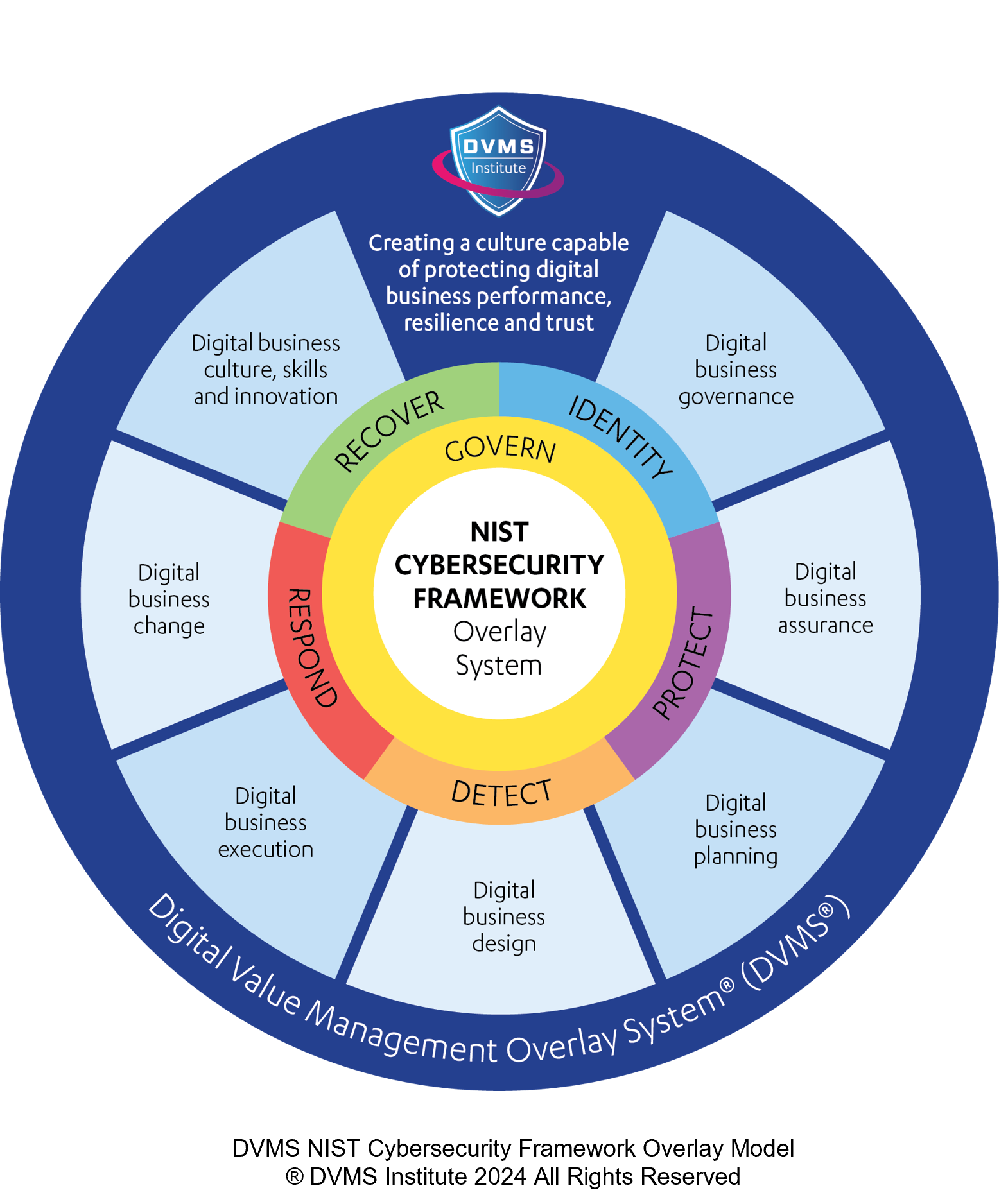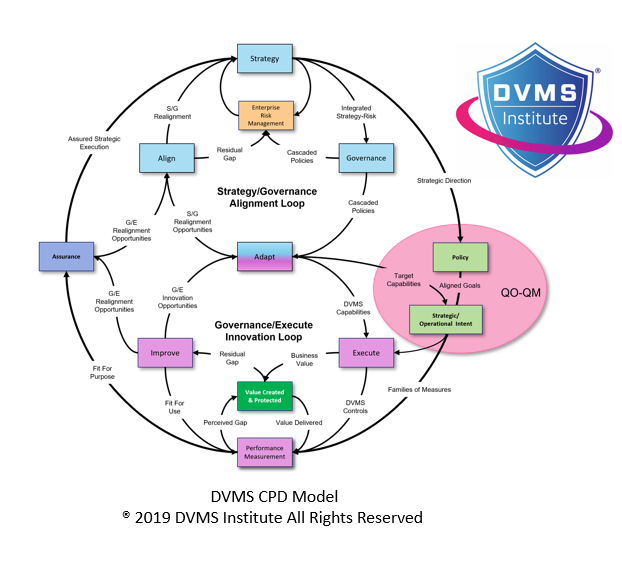NIST Cybersecurity Framework and DORA: A Complementary Partnership
Rick Lemieux – Co-Founder and Chief Product Officer of the DVMS Institute
The intricate interplay of digital transformation and the escalating sophistication of cyber threats has necessitated a robust, multifaceted approach to safeguarding operational resilience. Two pivotal frameworks, the National Institute of Standards and Technology Cybersecurity Framework (NIST CSF) and the Digital Operational Resilience Act (DORA), have emerged as indispensable tools for organizations navigating this complex landscape. While distinct in their origins and specific focus, these frameworks provide a comprehensive and complementary approach to managing cyber and operational risks.
The NIST CSF, a voluntary framework, provides a structured methodology for organizations to assess and improve their cybersecurity posture. Its core functions – govern, identify, protect, detect, respond, and recover – outline a lifecycle approach to managing cyber risk. This framework’s flexibility enables its adaptation across diverse industries, making it a valuable resource for organizations seeking to strengthen their cyber defenses.
DORA, on the other hand, is a European Union regulation explicitly targeting the financial sector. Its primary objective is to enhance the operational resilience of financial institutions by mandating measures to prevent, manage, and mitigate operational risks, including those stemming from cyber threats. DORA introduces a stringent regulatory framework, compelling financial institutions to adopt a proactive stance towards operational resilience.
While the NIST CSF offers a broad cybersecurity blueprint, DORA provides a sector-specific regulatory mandate. However, their underlying principles converge at several critical junctures. Both frameworks underscore the paramount importance of risk management, emphasizing the need to identify, assess, and mitigate potential threats. This shared focus on risk-based approaches creates a solid foundation for organizations to build upon.
Furthermore, both frameworks recognize the pivotal role of incident response and business resilience. The NIST CSF outlines the necessary steps for detecting, responding to, and recovering from cyber incidents. At the same time, DORA mandates robust incident management capabilities and the ability to maintain critical operations during disruptions. This alignment reinforces that effective cybersecurity is intrinsically linked to overall operational resilience.
The management of third-party risks is another area where the two frameworks intersect. As organizations increasingly rely on external service providers, the potential for cyberattacks emanating from these third parties has grown exponentially. The NIST CSF and DORA emphasize the importance of assessing and managing the risks associated with third-party relationships, ensuring that supply chain security is a top priority.
By integrating the NIST CSF and DORA, organizations can achieve higher operational resilience. The CSF provides a structured methodology for identifying vulnerabilities and implementing protective measures, while DORA ensures compliance with specific regulatory requirements. This combined approach creates a robust defense-in-depth strategy, mitigating the risk of cyberattacks and operational disruptions.
Moreover, the complementary nature of these frameworks can drive efficiency and cost-effectiveness. Organizations can leverage existing cybersecurity investments and processes to meet the requirements of both frameworks, avoiding duplication of efforts and optimizing resource allocation.
The NIST Cybersecurity Framework and DORA represent a powerful partnership in achieving operational resilience. Organizations can develop a comprehensive and practical approach to managing cyber and operational risks by understanding their shared objectives and leveraging their complementary strengths. This synergistic relationship is essential for safeguarding critical infrastructure, protecting sensitive data, and maintaining business continuity in an increasingly complex and threat-laden digital landscape.
About the Author
Rick Lemieux
Co-Founder and Chief Product Officer of the DVMS Institute
The DVMS Institute teaches organizations of any size, scale, or complexity an affordable approach to mitigating cyber risk to protect digital business performance, resilience, and trust.
Rick has 40+ years of passion and experience creating solutions to give organizations a competitive edge in their service markets. In 2015, Rick was identified as one of the top five IT Entrepreneurs in the State of Rhode Island by the TECH 10 awards for developing innovative training and mentoring solutions for boards, senior executives, and operational stakeholders.
® DVMS Institute 2024 All Rights Reserved



